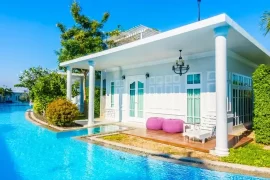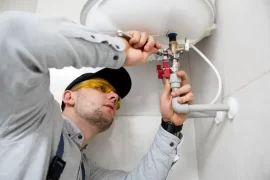Summer brings long, sun-drenched days and the opportunity for plenty of outdoor fun. However, it also heralds the challenge of keeping our home interiors comfortably cool without relying solely on air conditioning, which can be both costly and environmentally taxing. For homeowners and interior design enthusiasts, finding sustainable and cost-effective solutions to this dilemma is paramount.
Understanding the Heat
Before we can effectively counteract the summer heat, it’s essential to understand how it infiltrates our homes. Heat can enter through windows, doors, walls, and roofs, especially if these structures are not well-insulated.

Additionally, indoor activities, appliances, and lighting can all contribute to raising the temperature. Several key factors influence your home’s indoor climate, including its orientation, the amount of shade it receives, and its ventilation capabilities.
Effective Cooling Strategies for Home Interiors
Natural Ventilation and Shading Techniques
One of the most energy-efficient ways to cool your home is to enhance natural ventilation. This can be achieved by strategically opening windows in the early morning and late evening to allow cooler air to circulate through the house. Additionally, residential window tinting such as those in Salt Lake can further enhance your home’s cooling efficiency by reducing heat gain. During the day, utilizing shades, blinds, or curtains to block direct sunlight can significantly reduce heat gain.
Energy-Efficient Appliances and Smart Home Technology
Investing in energy-efficient appliances, particularly those that generate less heat, can also help maintain cooler interiors. Additionally, smart home technology like programmable thermostats can optimize your cooling systems, ensuring they run more efficiently and only when necessary.
Incorporating Reflective and Insulating Materials
Upgrading your home with reflective or insulating materials is another effective strategy to combat summer heat. Reflective roof materials or paints can reflect the sun’s rays, significantly reducing heat absorption through the roof. Similarly, adding insulation to walls and attics keeps the interior of your home cooler by preventing heat entry. These upgrades not only contribute to a more comfortable living environment but also to considerable energy savings over time.
Design Elements for Cooler Interiors
Light-Colored and Breathable Materials
The materials you choose for your furniture and decor play a crucial role in your home’s temperature. Opting for light-colored and breathable fabrics can help keep your living spaces feeling airier. Similarly, selecting paints and finishes in lighter shades for walls and roofs can reflect rather than absorb heat.
Layout and Room Orientation
The layout of your home and the orientation of rooms can affect how heat is distributed. Rooms facing west or south tend to be warmer. Positioning living spaces in cooler areas of the house and designing sleeping areas with optimal ventilation in mind can contribute to a more comfortable environment.
Sustainable Cooling Solutions
Solar Panels and Green Roofs
For those looking to take a step further in sustainable cooling, solar panels and green roofs offer excellent insulation benefits. Solar panels can shield your roof from direct sunlight while generating electricity, and green roofs (covered with vegetation) can significantly reduce heat absorption, improving the overall insulation of your home.
Conclusion
Maintaining cooler home interiors during the summer doesn’t have to be an insurmountable challenge. By understanding how heat works and implementing strategic cooling techniques, it’s possible to create a comfortable and sustainable living environment. From enhancing natural ventilation to choosing the right design elements and investing in green technology, there are numerous ways to beat the heat.






